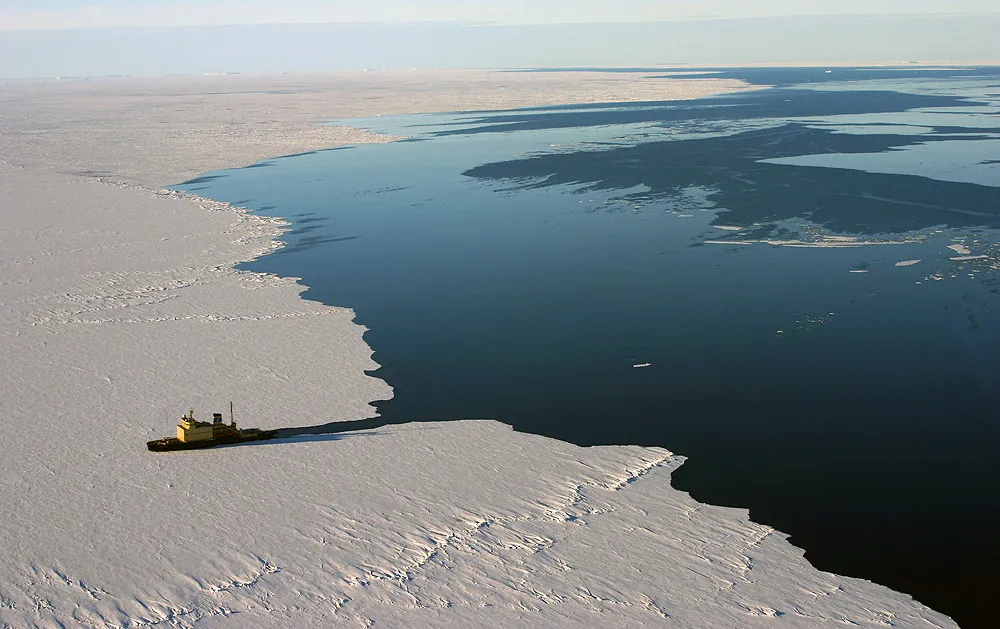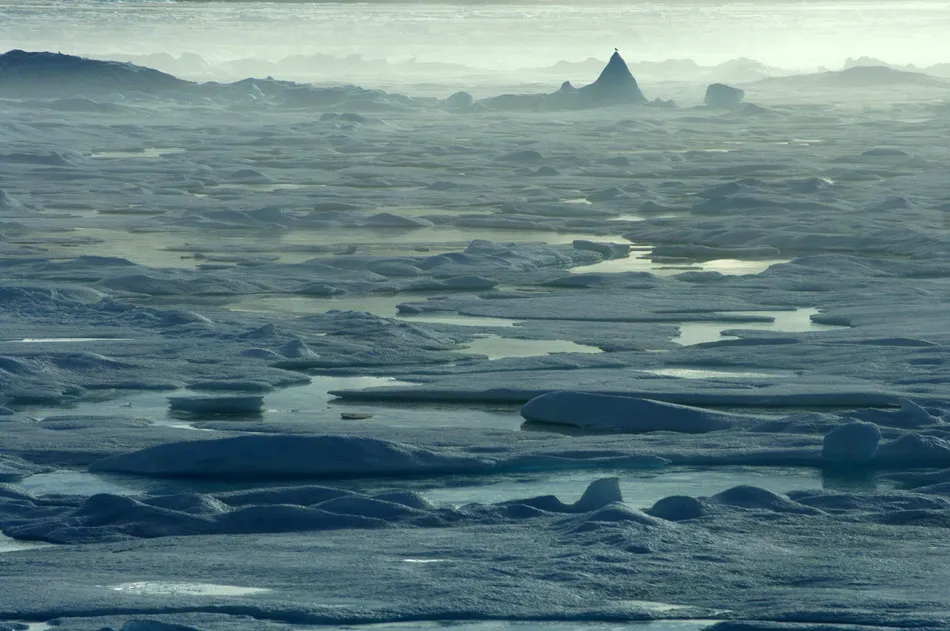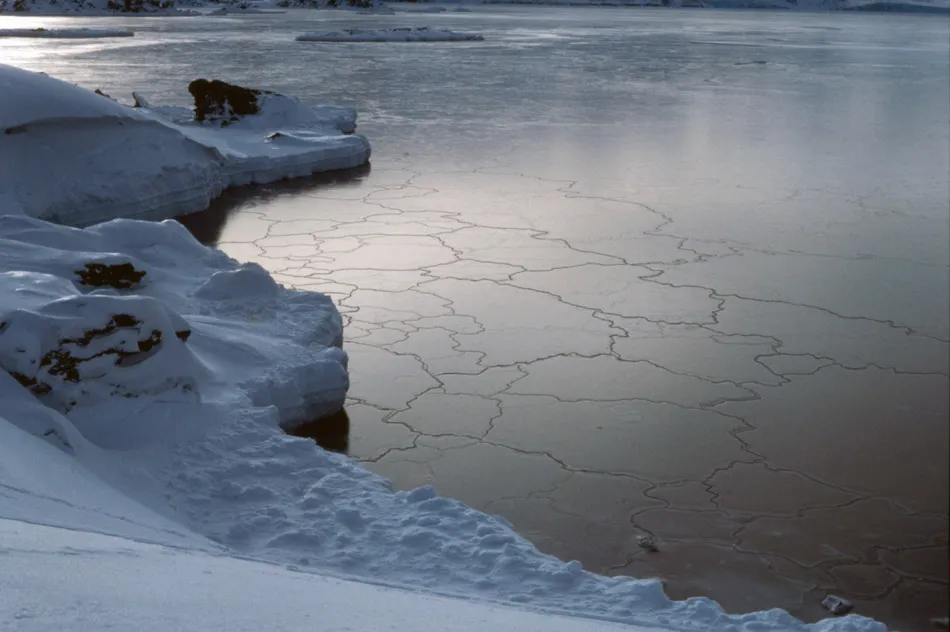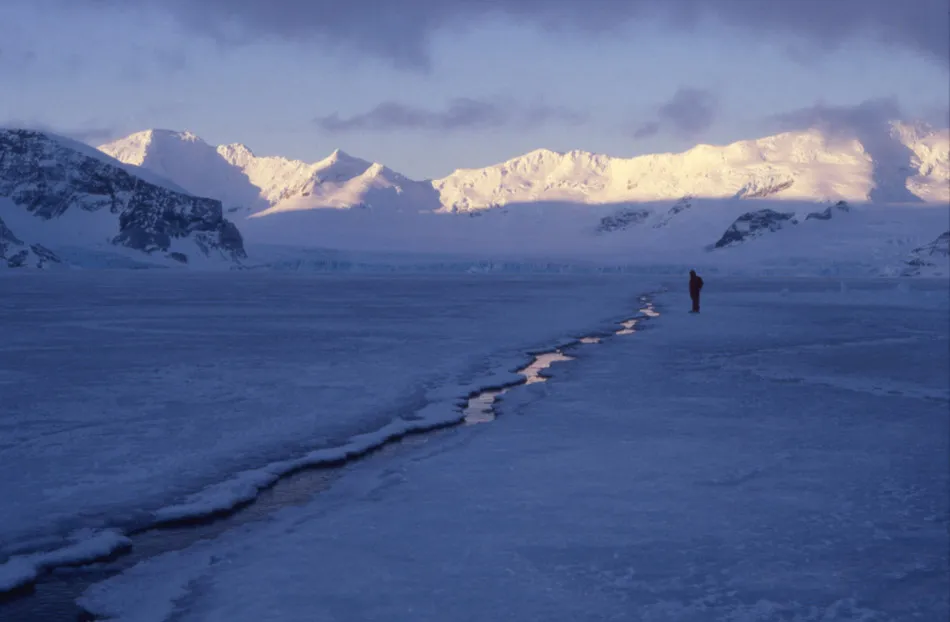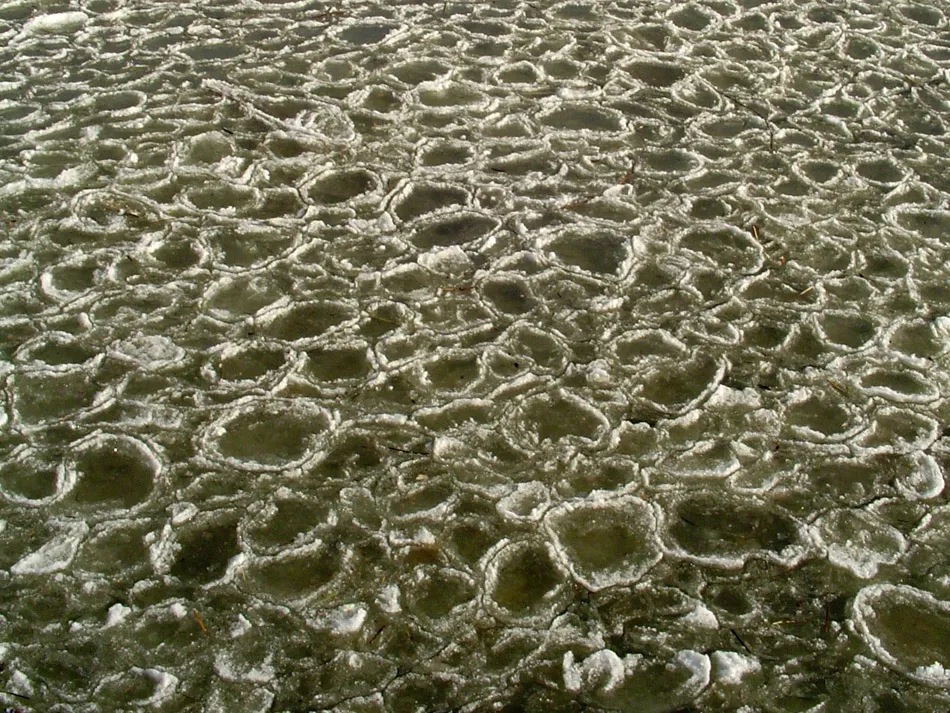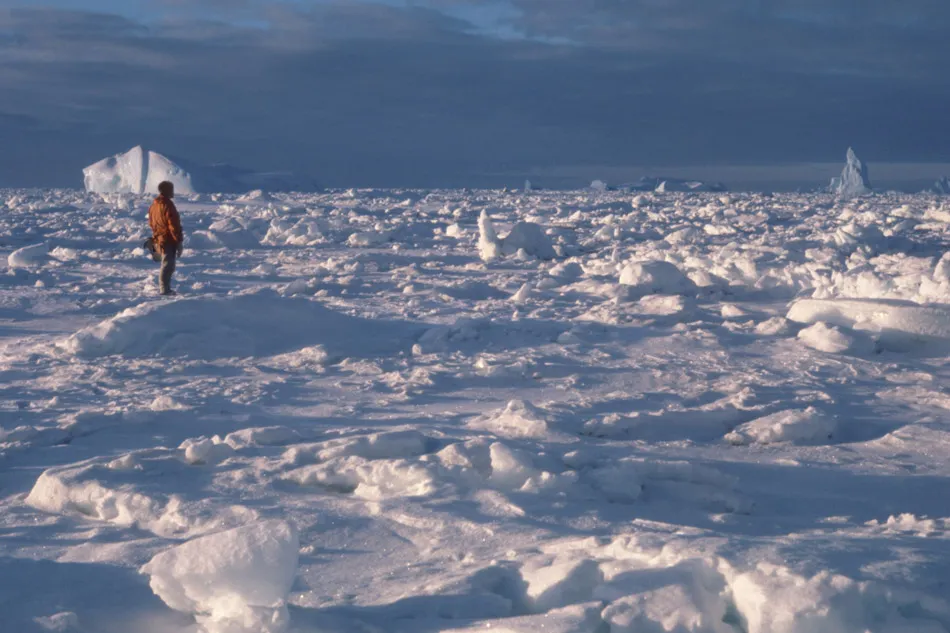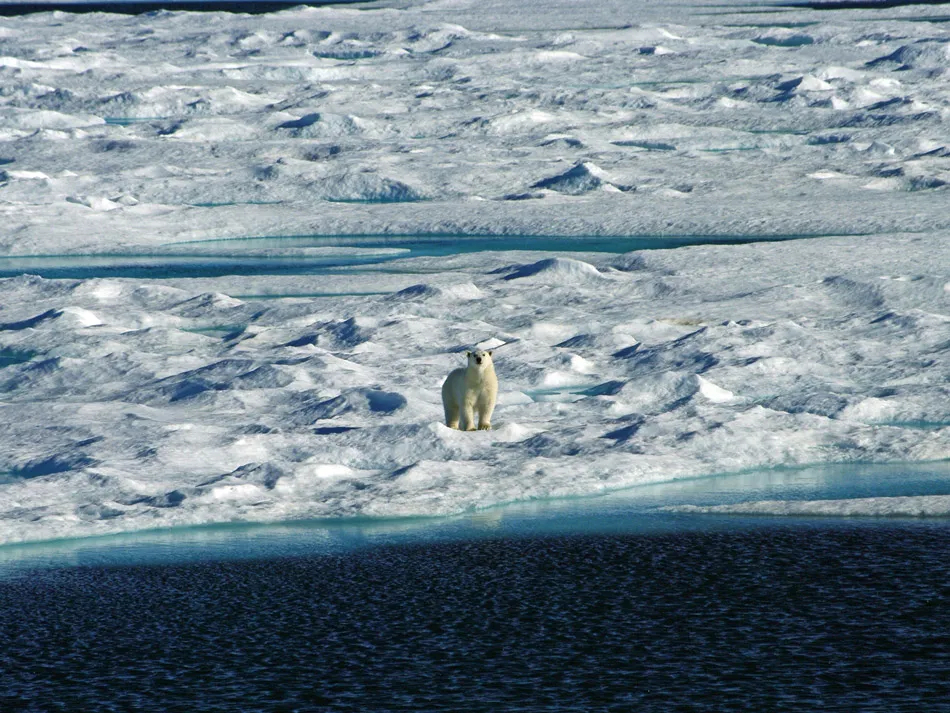Sea Ice
Sea ice around Antarctica varies from about 20 million square kilometers in September or October to about 2.5 million square kilometers in January or February.
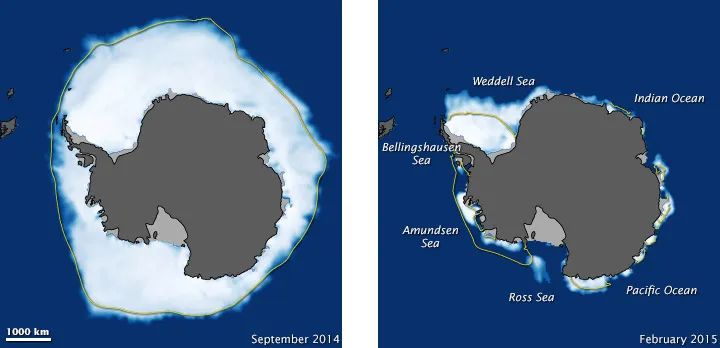
What is pack-ice?
At the beginning of the austral (southern) winter starting around March, loose ice that has spent the summer months circling Antarctica begins to drift northwards. Pack ice is old sea-ice, frozen sea water that is a year old or more, it froze and formed elsewhere during last winter, then it broke up and floated off with the winds and currents.
Pack ice is heavy stuff and when it arrives somewhere it has the effect of damping down the ocean swell, that continuous rise and fall of the sea even if there aren't any waves. The continuous rolling motion of the sea is stopped completely by a relatively narrow band of pack ice only 100m or so wide. The result is that where pack ice is present in reasonable quantity, the sea calms down sufficiently for low temperatures to freeze it easily - moving water cannot freeze as easily as static water.
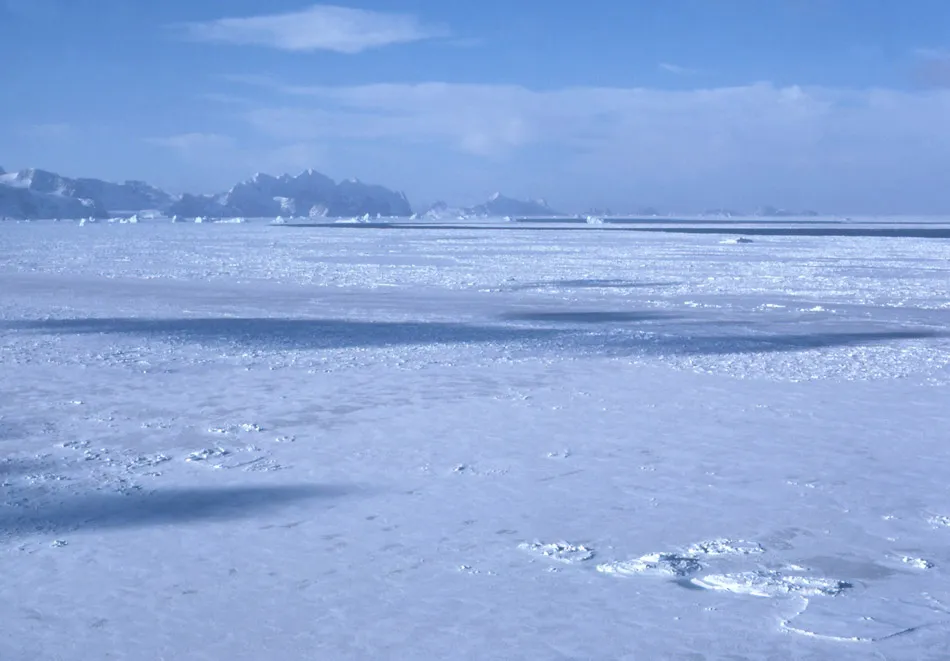 Early winter and pack-ice
(the rough ice) helps calm the sea down so that fast ice (the
smooth ice) can form when the surface of the sea freezes
Early winter and pack-ice
(the rough ice) helps calm the sea down so that fast ice (the
smooth ice) can form when the surface of the sea freezes
Pack ice can be very dangerous to boats and ships when closely pushed together. It can make it impossible for all but powerful icebreakers to make progress through it, instead the ship has to go where the ice wants to drift. If it is not closely pushed together, it can quickly become so as a result of wind and tide, so it is always approached with caution. Pack ice can be pushed by distant storms bringing violent movement to otherwise calm local weather. In this way, pack ice has been responsible for the destruction of many ships, especially in the days of wooden sailing ships, including the loss of Ernest Shackleton's ship, the Endurance.
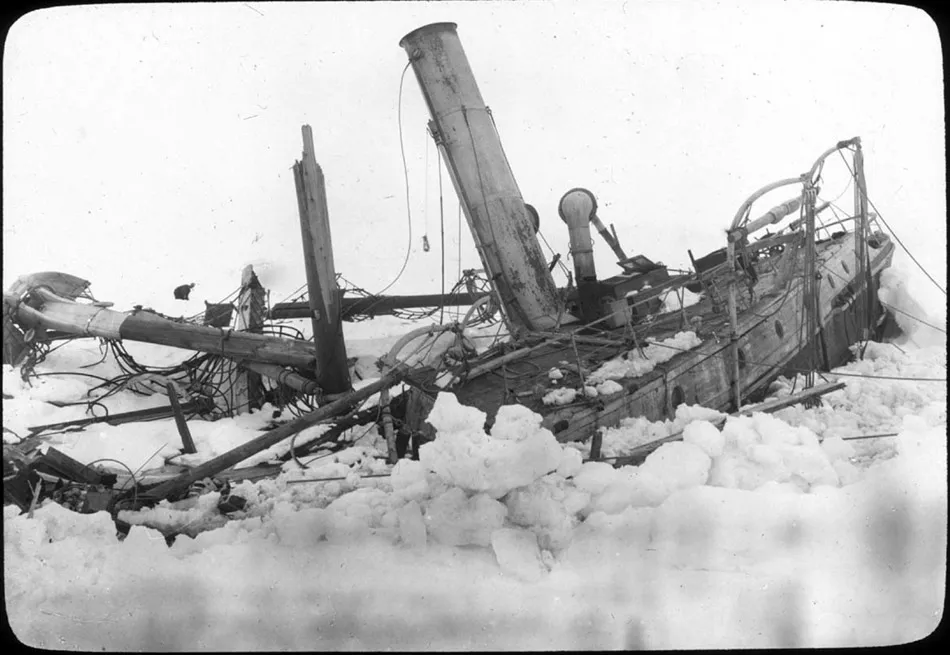 Ernest Shackleton's ship
the Endurance crushed by pack ice in the Weddell Sea shortly
before it sank
Ernest Shackleton's ship
the Endurance crushed by pack ice in the Weddell Sea shortly
before it sank
What is fast-ice?
This is sea-ice in the very early stages of formation. Sea-ice that forms in situ and attached to the coast is called "fast-ice", it is stuck fast. In this picture the surface of the sea is beginning to freeze as the temperature is dropping to -20C and below.
At this stage the ice is around an inch or 2.5cm thick but it has an open spongy structure, you could poke a finger or certainly a fist through it relatively easily.
The patterned effect comes from the rise and fall of the tides. As the tide rises, so the surface of the sea enlarges slightly and so the ice cracks apart, as the tide falls, so the surface of the sea decreases slightly and so the slabs of ice overlap at the edges.
Does the tide affect the way the sea freezes? What is a tide crack?
Once fast ice (sea-ice frozen in situ) has become established, the patterns of the earlier pieces disappears.The tide still rises and falls however meaning that the sea surface expands and shrinks slightly as it does so.Tide cracks result from this, they are formed when the ice moves apart, they close again when the tide falls. A tide crack can be many miles long, in the picture below it is around 5 miles (8 kilometres), but never more than about 18", 45cm wide between Signy and Coronation Islands in the South Orkneys group.
Tide cracks are valuable resources for wild-life as they provide a region where birds such as snow petrels can fish through for krill and also as a breathing hole for crabeater and Weddell seals.
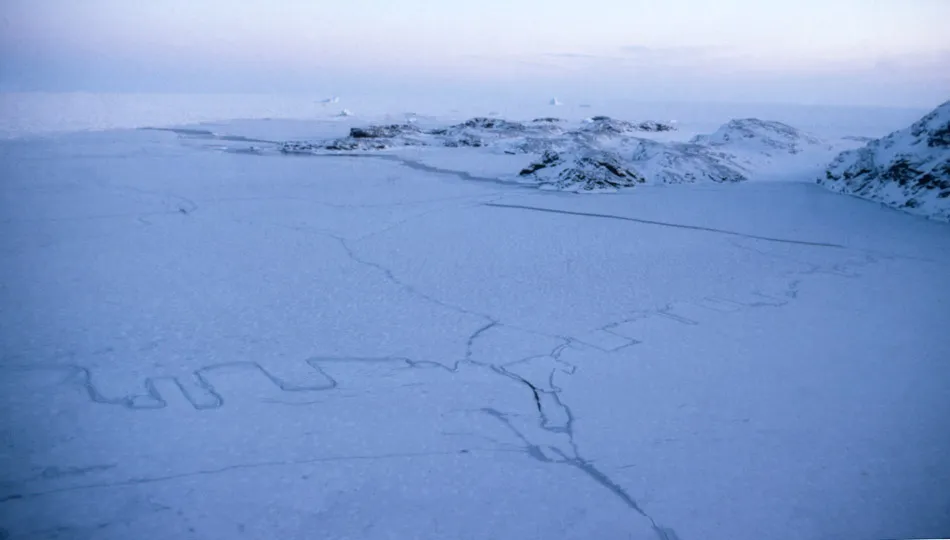 Patterns forming in
young ice as it cracks and is pushed over itself
Patterns forming in
young ice as it cracks and is pushed over itself
What are ice pancakes?
The ice here is known as "pancake-ice". This is formed when slabs of ice that are forming are jostled by gentle movements of wind and sea.
The pieces of ice bash against each other and start to curl upwards at the edges. It is a common stage in the formation of a continuous ice surface on the sea, lakes, rivers, or anywhere where the freezing process is disturbed by movement of the individual pancake pieces. It usually ends with a smooth icy surface with no indication of this intermediary stage.
"Pancakes of submerged
ice joined with others into great sheets, the rubbery green
ice thickened, an ice foot fastened onto the shore, binding
the sea with the land. Liquid became solid, solid was buried
under crystals."
Annie Proulx - The Shipping News
Do ice-bergs move around when the sea freezes?
Heavy pack ice and grounded icebergs This kind of ice looks smooth from a distance, but is very hard and slow to traverse. It is made up of last years pack ice (frozen sea-ice) that broke up, partially melted and became far from a smooth surface during the summer.
Now, in the winter, the random shaped, uneven pieces have been cemented together by frozen sea water in between. The result is a very rugged surface where the quickest way to travel is by foot, vehicles or skis require so much continuous stop-start and change of direction that they actually slow you down.
The ice-bergs that you see in the distance have been frozen in position and will remain so until they are freed by the spring break-up of the surrounding sea-ice, in the meantime it's possible to walk out to them, though slow going across the very rough broken up surface.
What happens to fast ice in the summer?
At the end of the winter, rising oceanic swells and increasing temperatures cause the stable winter sea-ice to break-up and begin to drift away from where it formed. This years fast-ice therefore becomes next years pack-ice with a portion of it melting and disappearing completely.In the first picture below, the ice-breaker Kapitan Khlebnikov is breaking through thinning ice in the spring, the open water is where ice has already broken out, the rest will join it before long. In the bottom picture, a polar bear taking a well earned break during a marathon swim in the Arctic is rudely interrupted by a ship he suspects has its beady eye on his ice floe.
